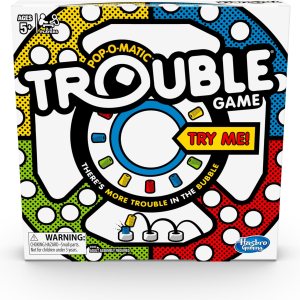Bringing a bottle into your breastfeeding routine can feel like a big step — for you and your little one! Whether you’re heading back to work, wanting to share feeding duties with your partner, or simply giving your baby a taste of something new, introducing a bottle can sometimes come with its challenges. But don’t worry, with a bit of patience and some helpful tips, you can make this transition smooth and stress-free for both you and your baby. In this post, we’ll walk you through easy, gentle ways to introduce a bottle to your breastfed baby, so feeding time remains a happy, comforting experience all around. Let’s dive in!
Table of Contents
- Choosing the Right Bottle and Nipple for Your Breastfed Baby
- Timing Matters When Introducing the Bottle
- Creating a Calm and Comfortable Feeding Environment
- Tips to Make the Bottle Feeding Experience Smooth and Enjoyable
- In Summary
Choosing the Right Bottle and Nipple for Your Breastfed Baby
When selecting feeding tools for your little one, it’s important to keep in mind their comfort and natural feeding style. Opt for bottles specifically designed for breastfed babies, which often feature slow-flow nipples that mimic the flow and feel of breastfeeding. This prevents nipple confusion and allows your baby to regulate their milk intake comfortably. Look for bottles made from BPA-free materials with wide necks, as these are easier to clean and resemble the shape of the breast, encouraging a familiar latch.
Key features to consider include:
- Soft, flexible nipples made from silicone that imitate the texture of the breast
- Variable flow options to suit your baby’s age and feeding pace
- Anti-colic vent systems to reduce gas and discomfort
- Ergonomic bottle shapes that are easy to hold for both baby and caregiver
Timing Matters When Introducing the Bottle
Introducing a bottle too early can lead to confusion or preference issues for your little one. Most experts recommend waiting until your baby is around 3 to 4 weeks old, when breastfeeding is well established and both you and your baby are comfortable with the routine. At this stage, your baby’s latch and feeding reflexes are more mature, making the transition smoother and reducing the risk of nipple confusion.
When it’s the right time, try to keep these tips in mind to make the change gentle and positive:
- Offer the bottle when your baby is calm: Avoid times when they are extremely hungry or upset to encourage acceptance.
- Have someone else feed the bottle: Babies often associate mom with breastfeeding, so a caregiver handing the bottle can make the switch feel more natural.
- Stick to familiar feeding cues: Mimic breastfeeding positions and maintain eye contact to create comfort and trust.
Creating a Calm and Comfortable Feeding Environment
Setting the stage for a successful bottle introduction begins with crafting a serene atmosphere that mimics the closeness and warmth of breastfeeding. Choose a quiet spot free from distractions where you and your baby can connect without interruptions. Soft lighting, such as natural daylight or a dim lamp, helps create a soothing mood, while gentle background sounds—like lullabies or white noise—can calm a fussy little one. Bringing along a favorite blanket or a nursing scarf can provide familiar scents, giving your baby a sense of security and making the transition feel more natural.
Before feeding, consider these simple tips to enhance comfort and relaxation:
- Hold your baby close, skin-to-skin if possible, to recreate that intimate breastfeeding connection.
- Use slow, rhythmic movements when offering the bottle to promote calmness and ease.
- Ensure the bottle nipple flow is appropriate—not too fast to overwhelm, nor too slow to frustrate.
- Maintain eye contact and gentle talk to soothe and reassure your baby throughout the feeding.
Tips to Make the Bottle Feeding Experience Smooth and Enjoyable
Creating a calm and cozy atmosphere during bottle feeding can work wonders for both you and your baby. Start by choosing a quiet, comfortable spot free of distractions where you can focus entirely on bonding. Hold your baby close and try to keep the feeding pace gentle and unhurried. Remember, your baby is used to your warmth and presence, so maintaining skin-to-skin contact or keeping them nestled against your chest can provide a familiar sense of security. Also, experiment with different bottle nipples to find the flow that your little one prefers—this simple tweak can often ease any initial resistance or fussiness.
Keep these handy tips in mind for a smoother transition:
- Warm the milk to body temperature to mimic the comforting feel of breastmilk.
- Let someone else offer the bottle the first few times to minimize confusion about who is feeding.
- Respond to your baby’s cues and avoid rushing—patience is key.
- Keep feedings consistent to build familiarity and trust.
- Encourage plenty of eye contact and soothing words to reinforce bonding outside of breastfeeding.
In Summary
Introducing a bottle to your breastfed baby doesn’t have to be stressful. With a little patience, the right timing, and some gentle encouragement, you and your little one can navigate this new step smoothly. Remember, every baby is unique, so trust your instincts and adjust the approach as needed. Whether it’s for feeding flexibility, returning to work, or just giving yourself a well-deserved break, you’ve got this! Here’s to happy feeding moments ahead—cheers to making bottle time a cozy, loving experience for both you and your baby.
Related Products
-
Sale!
Easy@Home 50 Ovulation Test Strips and 20 Pregnanc…
Mom Original price was: $19.98.$12.81Current price is: $12.81. -
Sale!
Regal Games Card Games for Kids – Go Fish, Crazy 8…
Kids Original price was: $16.99.$12.99Current price is: $12.99. -
J.VER Men’s Cotton Linen Short Sleeve Shirts Casua…
Clothing $19.99







